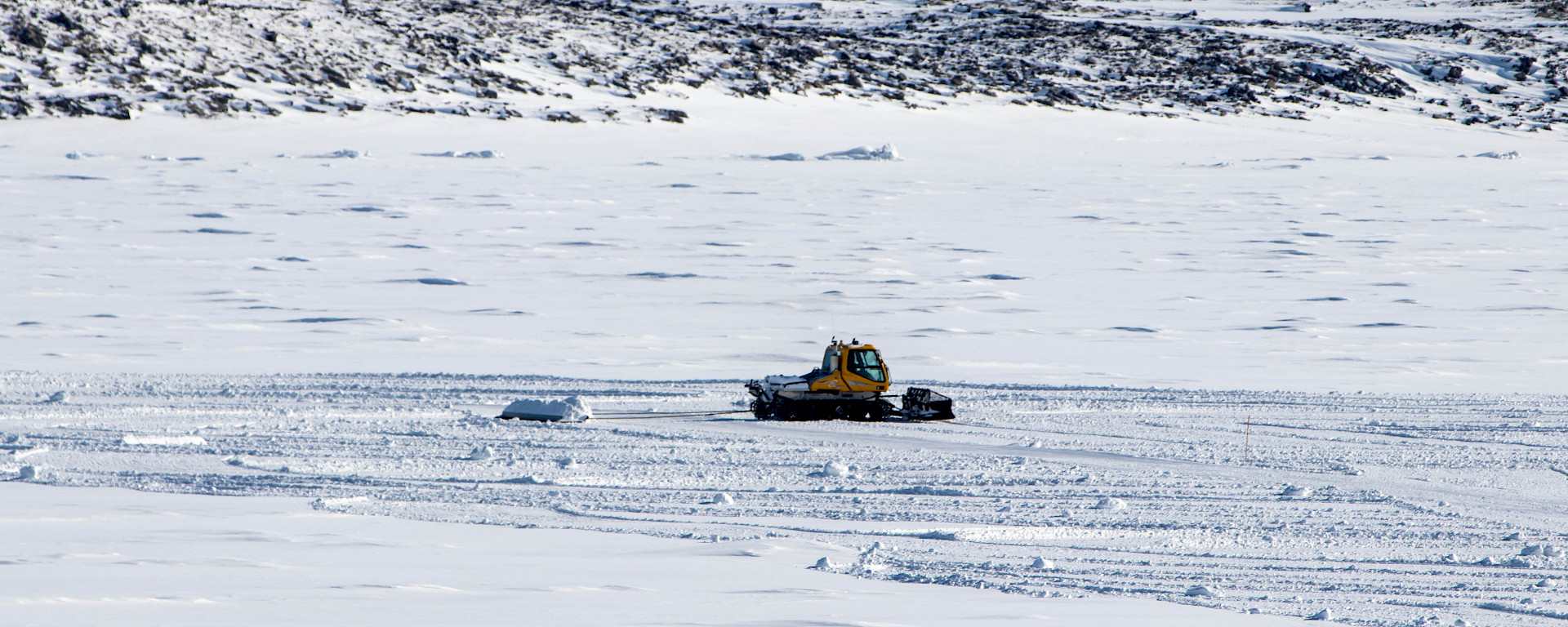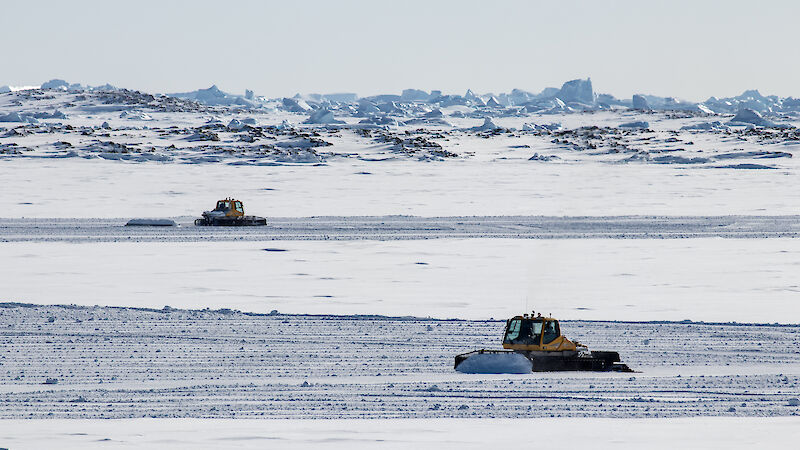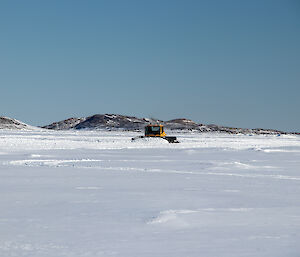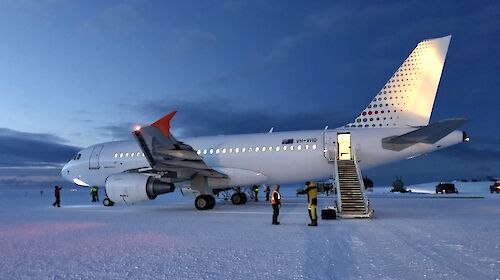An Antarctic runway on the frozen ocean is being prepared on the sea-ice in front of Australia’s Davis research station.
The expeditioners are constructing a 1.5 kilometre long and 50 metre wide sea-ice ski landing area for small aircraft, such as the Twin Otters and Baslers, for inter-station flights.
The first step in building a ski landing area is to check the site for any hazards, like tide cracks, rafted ice and wildlife.
Then the sea-ice is drilled to ensure it’s strong enough to support heavy equipment and aircraft. The area is then marked out and snow groomers are brought in to do the grunt work.
The snow groomer uses a blade on the front of machine to level out the surface. A drag beam is towed behind the machine to flatten and distribute the snow over the landing area.
Next the tiller, attached to the rear of the snow groomer, helps stick the snow to the sea ice, providing suitable friction along the length of the runway.
All these steps enable the safe operation of aircraft, allowing them to land, take off, taxi and park.
Finally, a windsock and marker flags are erected to mark out the site for the first flight, scheduled for late October.
It takes the amazing team on station about two weeks to prepare the sea-ice ski landing area ahead of the arrival of the first lot of summer expeditioners in a few weeks’ time.
This landing area is used until early December, when the warmer temperatures melt the ice and it breaks out of the bay.





